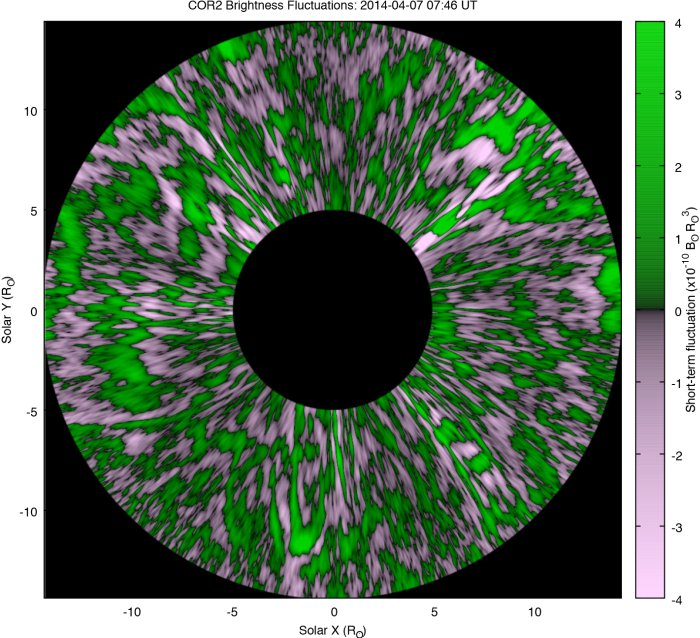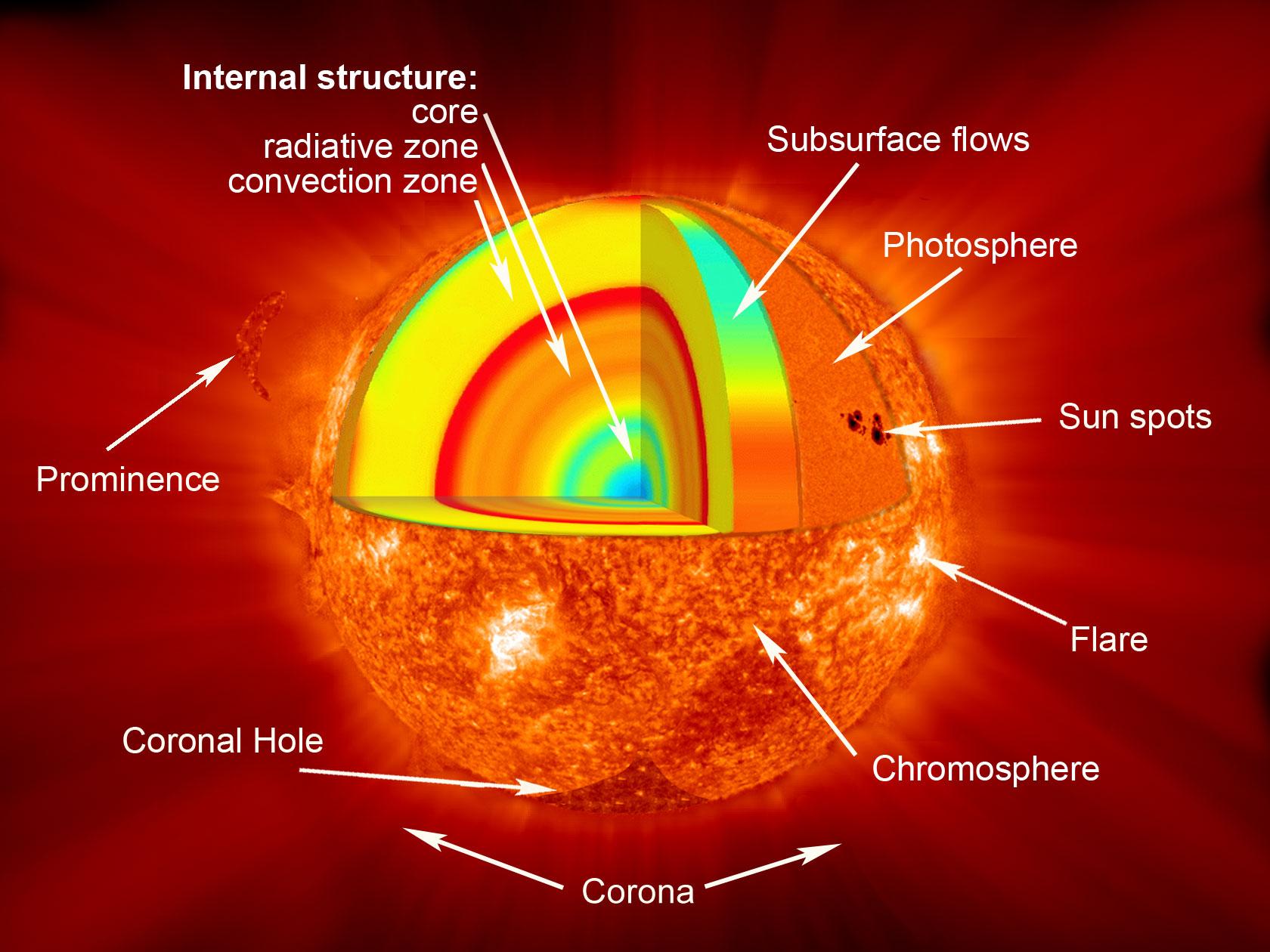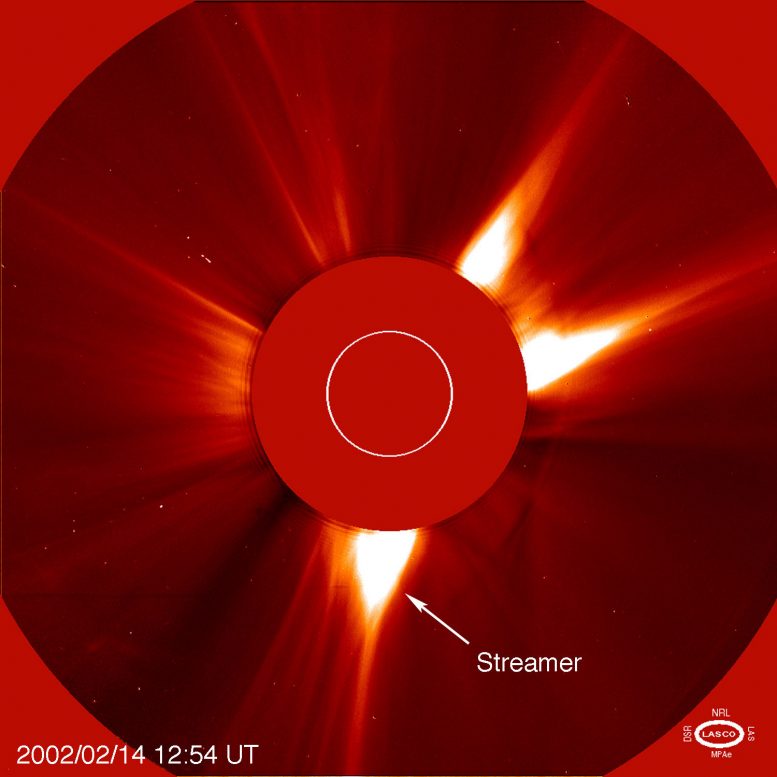Previously Unidentified "Structures" Photographed on the Outside of our Sun
Markab Algedi

Using what scientists are describing as more sophisticated processing techniques of images, and longer exposures, new photos have been taken of our own Sun’s outer atmosphere, known as the corona. They’re painting a picture of fine details being discovered that haven’t been observed before on the Sun, with some sort of structures that have yet to be identified.
Sort of serving to promote one Parker Solar Probe, which is going to examine the Sun and report back to people what they find (hopefully with some verifiable evidence to back their observations), a study about these solar structures was recently published in The Astrophysical Journal.

Image credit: sorendreier
A team from the Southwest Research Institute (SwRI) used what they call a COR-2 coronagraph instrument on a NASA piece of infrastructure, the Solar and Terrestrial Relations Observatory-A (STEREO-A) to take a look at the details of our Sun’s outer “atmosphere.”

Image credit: sciencealert
The tool is designed to capture photos of the Sun’s atmosphere by using what they call an “occulting disc,” that is a disc positioned in front of the lens that serves to block out the Sun itself from the photo, just to capture the gaseous, “atmospheric” corona surrounding the body of the sun. This technique is reported to be able to block out the light that would overshadow the fine details in the Sun’s outer plasma.

Image credit: ineffableisland
If you decide to believe or manage to reason through the scientific evidence that they cite, the official narrative is that the Sun’s corona is a temperature of between 1 and 3 million Kelvin, much hotter than the inner photosphere of the Sun which they estimate to be about 5,800 Kelvin.
Solar wind reportedly originates from this outer region that they’re studying, and that’s of course a constant stream of varied particles that constantly flows out in all directions from the Sun. This solar wind looks to be a prime candidate in what people should explore to theorize about the spiritual effects of the Sun, the ways we are affected by the Sun.
“In deep space, the solar wind is turbulent and gusty,” said Craig DeForest of the SwRI, a solar physicist.
“But how did it get that way? Did it leave the Sun smooth, and become turbulent as it crossed the solar system, or are the gusts telling us about the Sun itself?”
There’s a dead end in what science can explain, but recently these researchers have apparently been chipping away at that block of understanding. According to Science Alert:
“If the turbulence was occurring at the source of the solar wind – the Sun – then we should have been able to see complex structures in the corona as the cause of it, but previous observations showed no such structures.
Instead, they showed the corona as a smooth, laminar structure. Except, as it turns out, that wasn’t the case. The structures were there, but we hadn’t been able to obtain a high enough image resolution to see them.”
Perhaps spiritually interesting as well, the primary discovery of this research was that the Sun’s corona has structure, different layers and fine-tuned looking structures and things that in my opinion imply some factor of divinity. Things are so perfect in this existence, in a certain way.

Image credit: scitechdaily
“Using new techniques to improve image fidelity, we realised that the corona is not smooth, but structured and dynamic,” DeForest said. “Every structure that we thought we understood turns out to be made of smaller ones, and to be more dynamic than we thought.”
In order to obtain images detailed and true enough to see these things, the team did something special over the course of three days, in which their instrument captured more frequent, longer-exposure photos than it would normally, which is supposed to allow more time for light from faint sources, fine details, to be picked up by the coronagraph.
Sure, the occulting disc is effective at filtering out the Sun’s bright light they say, but there’s still plenty of noise in the raw photos. They say STEREO-A is an instrument that is in space, so they can’t modify the hardware of it. So, the team decided to refine the way they remove noise from the photos.
They developed what they call new “filtering algorithms,” and reportedly discovered that “streamers,” a kind of coronal loop which can erupt into coronal mass ejections that blast particles and plasma deep into space, are not one single structure but more part of a complex.
“There is no such thing as a single streamer,” DeForest said. “The streamers themselves are composed of myriad fine strands that, together, average to produce a brighter feature.”
(Image credit: Pixabay)
Thanks to: https://themindunleashed.com
Markab Algedi
- Jul 19, 2018

Using what scientists are describing as more sophisticated processing techniques of images, and longer exposures, new photos have been taken of our own Sun’s outer atmosphere, known as the corona. They’re painting a picture of fine details being discovered that haven’t been observed before on the Sun, with some sort of structures that have yet to be identified.
Sort of serving to promote one Parker Solar Probe, which is going to examine the Sun and report back to people what they find (hopefully with some verifiable evidence to back their observations), a study about these solar structures was recently published in The Astrophysical Journal.

Image credit: sorendreier
A team from the Southwest Research Institute (SwRI) used what they call a COR-2 coronagraph instrument on a NASA piece of infrastructure, the Solar and Terrestrial Relations Observatory-A (STEREO-A) to take a look at the details of our Sun’s outer “atmosphere.”

Image credit: sciencealert
The tool is designed to capture photos of the Sun’s atmosphere by using what they call an “occulting disc,” that is a disc positioned in front of the lens that serves to block out the Sun itself from the photo, just to capture the gaseous, “atmospheric” corona surrounding the body of the sun. This technique is reported to be able to block out the light that would overshadow the fine details in the Sun’s outer plasma.

Image credit: ineffableisland
If you decide to believe or manage to reason through the scientific evidence that they cite, the official narrative is that the Sun’s corona is a temperature of between 1 and 3 million Kelvin, much hotter than the inner photosphere of the Sun which they estimate to be about 5,800 Kelvin.
Solar wind reportedly originates from this outer region that they’re studying, and that’s of course a constant stream of varied particles that constantly flows out in all directions from the Sun. This solar wind looks to be a prime candidate in what people should explore to theorize about the spiritual effects of the Sun, the ways we are affected by the Sun.
“In deep space, the solar wind is turbulent and gusty,” said Craig DeForest of the SwRI, a solar physicist.
“But how did it get that way? Did it leave the Sun smooth, and become turbulent as it crossed the solar system, or are the gusts telling us about the Sun itself?”
There’s a dead end in what science can explain, but recently these researchers have apparently been chipping away at that block of understanding. According to Science Alert:
“If the turbulence was occurring at the source of the solar wind – the Sun – then we should have been able to see complex structures in the corona as the cause of it, but previous observations showed no such structures.
Instead, they showed the corona as a smooth, laminar structure. Except, as it turns out, that wasn’t the case. The structures were there, but we hadn’t been able to obtain a high enough image resolution to see them.”
Perhaps spiritually interesting as well, the primary discovery of this research was that the Sun’s corona has structure, different layers and fine-tuned looking structures and things that in my opinion imply some factor of divinity. Things are so perfect in this existence, in a certain way.

Image credit: scitechdaily
“Using new techniques to improve image fidelity, we realised that the corona is not smooth, but structured and dynamic,” DeForest said. “Every structure that we thought we understood turns out to be made of smaller ones, and to be more dynamic than we thought.”
In order to obtain images detailed and true enough to see these things, the team did something special over the course of three days, in which their instrument captured more frequent, longer-exposure photos than it would normally, which is supposed to allow more time for light from faint sources, fine details, to be picked up by the coronagraph.
Sure, the occulting disc is effective at filtering out the Sun’s bright light they say, but there’s still plenty of noise in the raw photos. They say STEREO-A is an instrument that is in space, so they can’t modify the hardware of it. So, the team decided to refine the way they remove noise from the photos.
They developed what they call new “filtering algorithms,” and reportedly discovered that “streamers,” a kind of coronal loop which can erupt into coronal mass ejections that blast particles and plasma deep into space, are not one single structure but more part of a complex.
“There is no such thing as a single streamer,” DeForest said. “The streamers themselves are composed of myriad fine strands that, together, average to produce a brighter feature.”
(Image credit: Pixabay)
Thanks to: https://themindunleashed.com






 Sat Mar 23, 2024 11:33 pm by globalturbo
Sat Mar 23, 2024 11:33 pm by globalturbo

